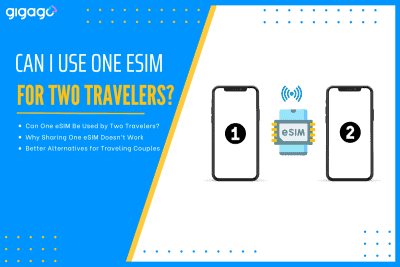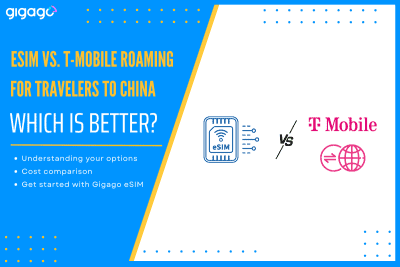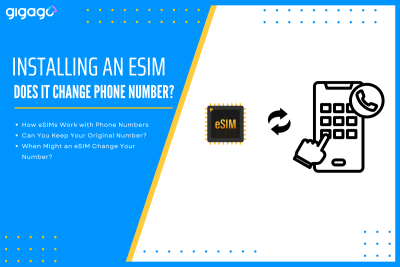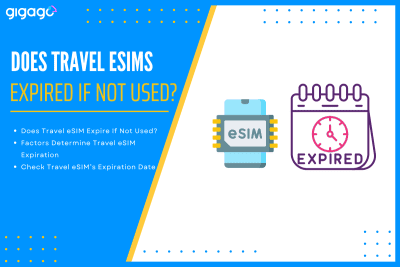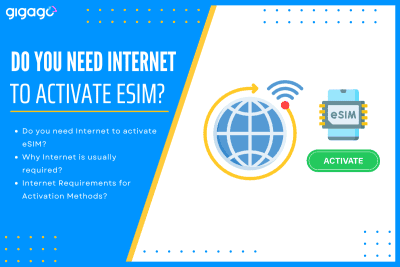When couples or friends travel together, it’s common to look for ways to save on mobile data. One question often comes up: “Can two travelers use the same eSIM?” The short answer is no – one eSIM cannot be used by two different travelers on two separate devices. However, there are practical alternatives that can […]
eSIM vs. Local SIM Cards for China: Which is better for travelers?
Staying connected while traveling in China is essential — for maps, translations, ride-hailing, or staying in touch. But connectivity in China can be tricky due to strict internet rules, real-name SIM registration, and limited access to popular Western apps.
Travelers have two main ways to get online: buying a local SIM card on arrival or setting up an eSIM before departure. Both options work well, but they differ in convenience, cost, and online access.
This guide compares eSIMs and local SIM cards for China travel, explains how connectivity works under China’s unique internet environment, and helps you choose the best option for your trip.
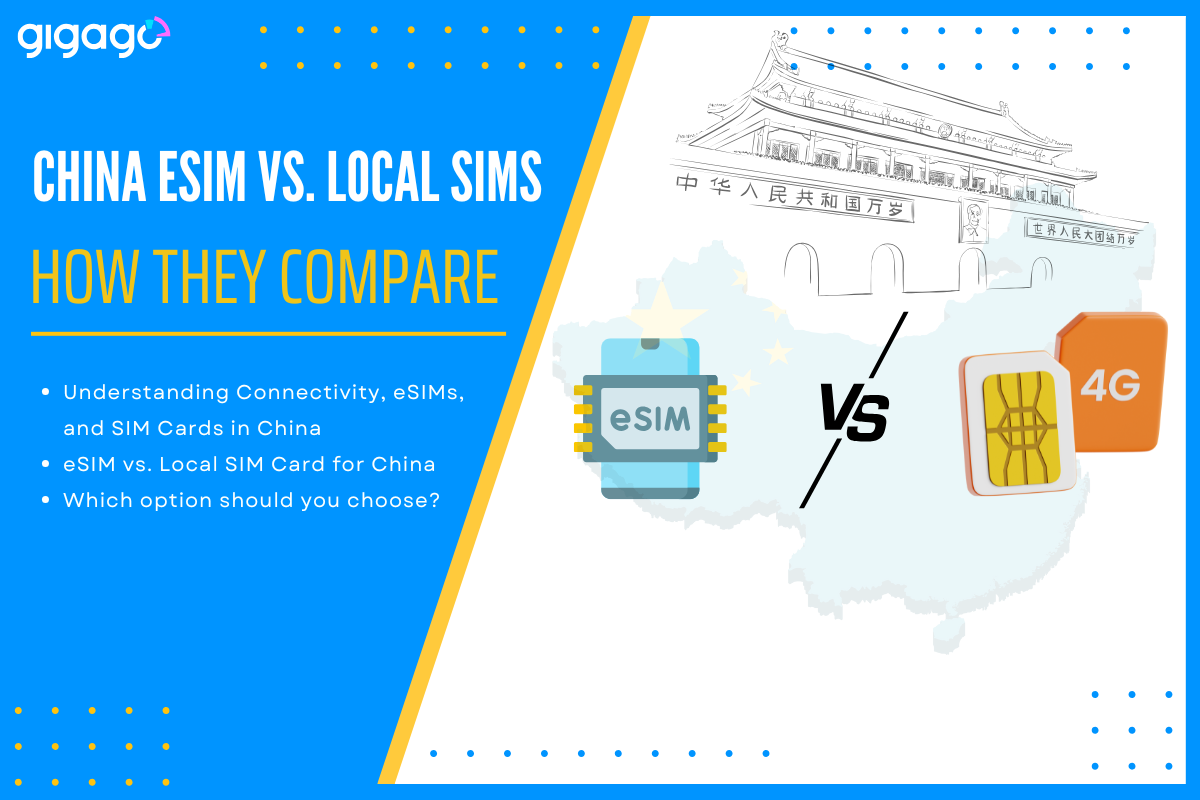
In this article
I. Understanding Connectivity, eSIMs, and SIM Cards in China
How connectivity works in China
- The country’s three main carriers — China Mobile, China Unicom, and China Telecom — all offer strong 4G/5G coverage.
- However, China’s “Great Firewall” restricts access to popular apps like Google, WhatsApp, and Facebook.
- Buying a local SIM card also requires passport verification under China’s real-name policy
- To access blocked platforms, travelers need either a VPN or an international eSIM that uses global data routing.
What is a local SIM card?
A local SIM card is a physical chip that lets your phone connect to Chinese networks. Travelers can choose either data-only or call + data plans, depending on how long they’re staying and what they need.
Because it operates within China’s domestic network, a local SIM is subject to the Great Firewall. That means you’ll need a VPN to access Google, Instagram, WhatsApp, and similar services.
What is an eSIM?
An eSIM (embedded SIM) is a built-in digital SIM you activate by scanning a QR code — no stores, paperwork, or ID required. Most travel eSIMs route data outside China, often allowing access to services that local SIMs can’t.
Most travel eSIMs route data outside China (often through Hong Kong or Singapore), which often allows access to services that local SIMs can’t — without needing a VPN.
II. eSIM vs. Local SIM Card in China: How They Compare
Instead of describing each option separately, here’s how they stack up across the most important factors:
1. Where and how to buy
Local SIM Card: You buy it in person at major airports (Beijing Capital, Shanghai Pudong, Guangzhou Baiyun), official carrier stores, convenience stores, or hotels. You’ll need your passport for ID verification and registration. The purchase and activation usually take 10–30 minutes, depending on queue length.
eSIM: You purchase it online from providers like Gigago. No passport or store visit required. The entire process is digital — select a plan, pay online, and receive a QR code via email.
2. Setup and activation
Local SIM Card: After purchase, staff will help you insert the SIM and configure your phone. Activation happens on the spot, but you may face language barriers outside major cities.
eSIM: Scan the QR code in your phone’s Settings menu under “Add eSIM” or “Add Cellular Plan.” Installation takes about 5 minutes and can be done before you leave home. The plan activates automatically when you arrive in China.
3. Internet access and restrictions
Local SIM Card: Operates within China’s network environment, meaning the Great Firewall applies. You will need a VPN to access:
- Google (Maps, Gmail, Search)
- Facebook, Instagram, WhatsApp
- YouTube, Twitter, and most Western news sites
Even with a VPN, connections can be slow or inconsistent.
eSIM: Most China eSIMs use international data routing, which often bypasses the Great Firewall. This typically allows direct access to Google, WhatsApp, Instagram, Facebook, and YouTube — without a VPN.
However, not every eSIM provider guarantees this. Some eSIMs may not support:
- TikTok (requires mainland China IP)
- ChatGPT or other AI apps (depends on provider routing)
Always check the plan description before purchasing.
4. Cost
Local SIM Card: Tourist packages usually start around $21 USD (≈150 RMB). Prices vary based on:
- Data volume (5GB, 20GB, unlimited)
- Validity (7–30 days)
- Whether calls and SMS are included
eSIM: Often more affordable, with prices starting from $1.84 USD for light data plans and $10–20 USD for larger bundles. Unlimited plans are also available. Top-up options depend on the provider.
5. Phone number, calls, and SMS
Local SIM Card: Includes a Chinese phone number. You can make local calls, receive SMS, and use the number to register for services like WeChat, Alipay, or Didi.
eSIM: Data-only. No Chinese phone number is provided. However, you can still make calls and send messages using internet apps like WhatsApp, Telegram, Skype, or FaceTime.
6. Device requirements
Local SIM Card: Works with almost any unlocked smartphone.
eSIM: Your phone must be eSIM-compatible and unlocked. Check this updated list of eSIM-supported devices or look in your phone’s Settings under “Cellular” or “Mobile Network” to see if there’s an “Add eSIM” option.
III. Which option should you choose?
For most tourists, an eSIM is the easier, faster and more convenient option. You will save time, spend less money, and likely avoid internet restrictions.
For long term travelers, a local SIM card may be more suitable, especially if you need local integration. Having a Chinese phone number is helpful with daily life, banking, food delivery and other services.
If your phone doesn’t support eSIM, a local SIM card is your only option.
IV. Why choose Gigago eSIM China for your China trip?
Among eSIM providers offering China eSIM, Gigago stands out thanks to its flexibility, transparency, and compatibility with modern travelers’ needs.
Key advantages:
- Offering both local and regional eSIM plans for China: China only, China – Hong Kong – Macau, China 14 countries, Global 77 countries
- Having both eSIM plans support TikTok and ChatGPT and regular China eSIM, while others (more affordable ones) do not — giving users control over cost and functionality.
- Providing 24/7 multilingual assistance via chat, email, phone, or WhatsApp – helpful if you need help installing or troubleshooting abroad.
- Plans start from $4.9, making it one of the most cost-effective options for China travel.
- Having multiple data volume and validity options that meet different travelers’ needs – from daily data, total data to unlimited.
With reliable coverage, transparent pricing, and full app accessibility, Gigago eSIM is a convenient and affordable solution for staying connected across China and beyond.
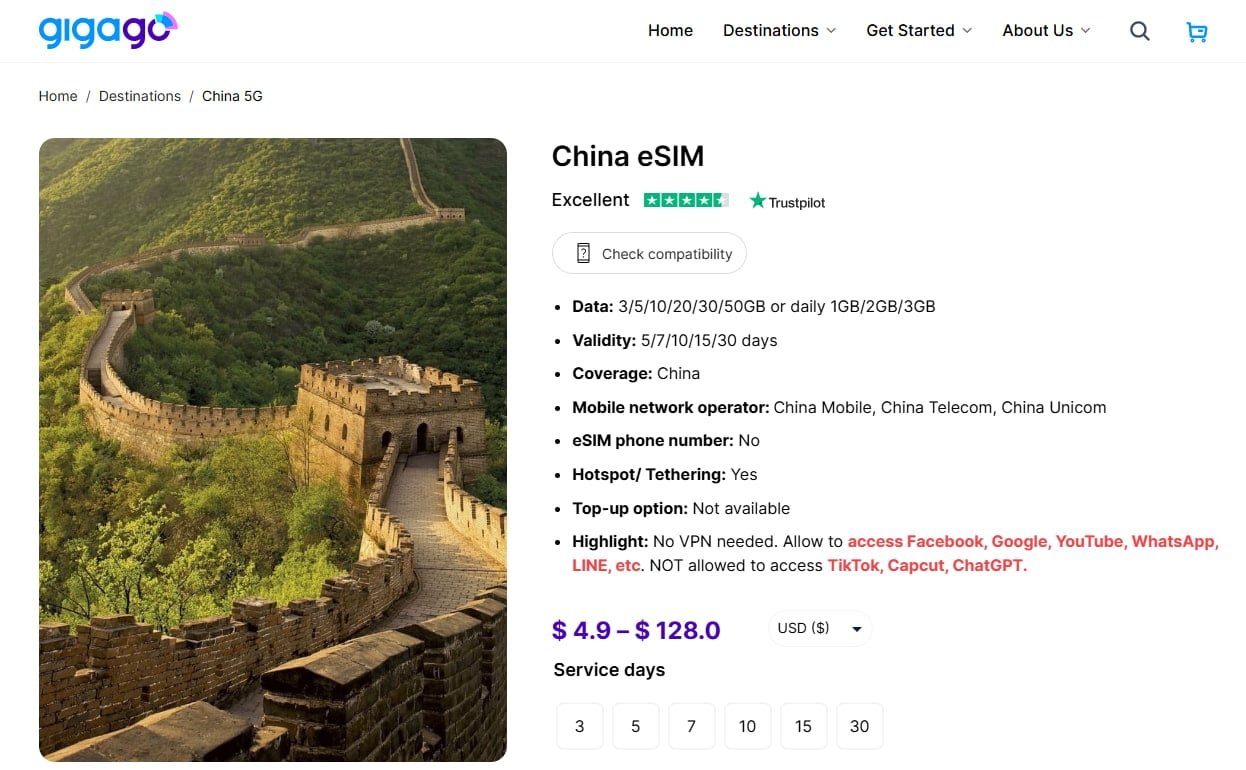
V. Tips for using eSIM or Local SIM cards in China
For eSIM users:
- Set up your eSIM while you’re still at home with good WiFi so you can troubleshoot any issues before you travel.
- Download a VPN as Backup. Popular options include ExpressVPN, NordVPN, or Surfshark.
- Turn off data roaming on your home SIM to avoid high charges.
- Monitor data usage through your eSIM provider app or phone settings.
For local SIM cards:
- Bring your passport when you arrive at the airport.
- Download and configure your VPN while you’re still in your home country because you won’t be able to download VPN apps or access VPN websites once you’re in China.
- Ask about top-up options. Some plans can be topped up through convenience stores or mobile banking apps.
- Keep your home SIM safe if you remove it to use a local one.
VI. FAQs
Can I use an eSIM in mainland China?
Yes, you can use an eSIM in mainland China if your phone supports eSIM and is unlocked.
Do eSIMs bypass China’s firewall?
In most cases, yes, especially if the provider uses international data routing through nearby regions such as Hong Kong or Singapore. However, not all eSIM providers guarantee this, so always check the plan description before purchasing.
Will my eSIM allow access to Google, WhatsApp, and Facebook?
Yes. For instance, Gigago’s China eSIM uses international connections that typically bypass the Great Firewall. Still, connection quality or access may vary depending on your chosen plan and location.
Can I get a Chinese phone number with an eSIM?
Generally, no. Most travel eSIMs for China are data-only plans, which do not include a local Chinese mobile number. But you can use the mobile data in the eSIM plan to make calls and texts via VoiP apps like WhatsApp, Telegram, Skype, etc.
Should I activate my eSIM before arriving in China?
Yes, it’s highly recommended to install and activate your eSIM before you arrive.
Do I need a VPN with an eSIM?
Usually not. Many international eSIMs for China route data through external networks, providing direct access to restricted apps
VII. Conclusion
In China, both local SIM cards and eSIMs will get you online — but which is better depends on your needs.
If you value convenience, speed, and open internet access, an eSIM is your best bet. If you plan to stay long-term or require a local number, a physical SIM card may fit better.
Still, for most tourists, the Gigago China eSIM offers the perfect balance of affordability, reliability, and freedom — helping you stay connected from the moment you land.
